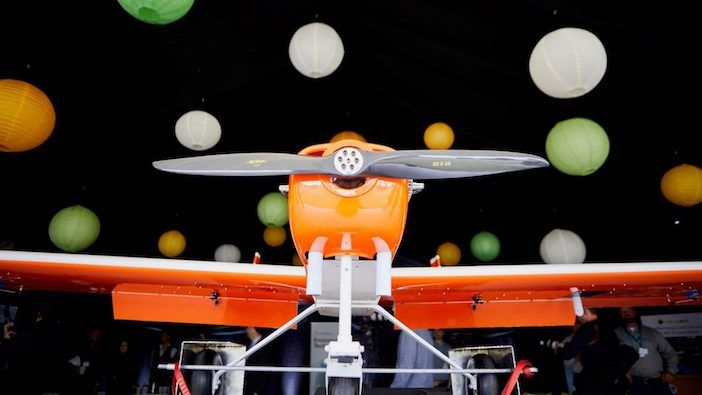BP and drone inspection company Flylogix has successfully tested a drone for monitoring methane emissions from oil platforms in the North Sea.
The fixed-wing remotely piloted drone uses sensor technology originally designed by NASA for the
Mars Curiosity Rover to monitor the emissions. The flight test broke the UK’s record for the longest commercial drone flight and demonstrated the feasibility of this approach to monitoring methane.
Record drone flight
The drone circled the Clair oil platform in the North Sea at a radius of 550m for 90 minutes, travelling for a total of more than 185km, beating the previous record for the longest flight of 100km. The pre-programmed drone, once airborne, managed itself autonomously. Throughout the flight, the system live-streamed data collected by the methane sensor.
Ariel Flores, North Sea regional president at BP, said, “Improving our knowledge, understanding and performance by testing new technologies and working closely with suppliers is central to the North Sea’s carbon reduction plan, which aims to limit greenhouse emissions in our North Sea business.
“This pilot project represents a significant step forward in our ability to do that.”
Following the successful testing, the drone is to be deployed to all of BP’s North Sea assets next year.
Project manager, Joe Godwin, Clair field environmental lead, said,“We wanted to test a method for collecting large amounts of data on our emissions over long periods of time, without having to send people or equipment offshore. The solution would also have to deal with the turbulent atmospheric conditions that we typically experience offshore in the North Sea.
“Ultimately, we identified the drone solution provided by FlyLogix combined with the ultra-precise sensor technology by SeekOps as a good fit with our requirements. We set up a test project to monitor methane emissions from our Clair Phase 1 platform, West of Shetland.
“The drone itself was tracked and remotely controlled by a team of three qualified pilots using satellite communications and radio link from the remote Island of Papa Stour – the team never had to leave their base onshore.”
Follows US progress
The North Sea trial follows the roll-out of a major leak detection drone program in BP’s US operations. BPX Energy is now using drone-mounted leak detection technologies which enable up to 1,500 well sites to be surveyed every month across all of its operating basins.
The flights generate data around the location and size of a leak and issue a work order to fix it. BPX Energy CEO Dave Lawler said, “We are encouraged by the efficiency gains achieved since drone inspections were fully deployed. Today, we are able to run Leak Detection and Repair programs in all of our assets at around US$40 per well and we believe costs will continue to fall.
“BP is committed to taking a leading role in addressing the methane challenge and we are seeing that digital technologies can expand the scale of our methane emissions reduction programmes.”





